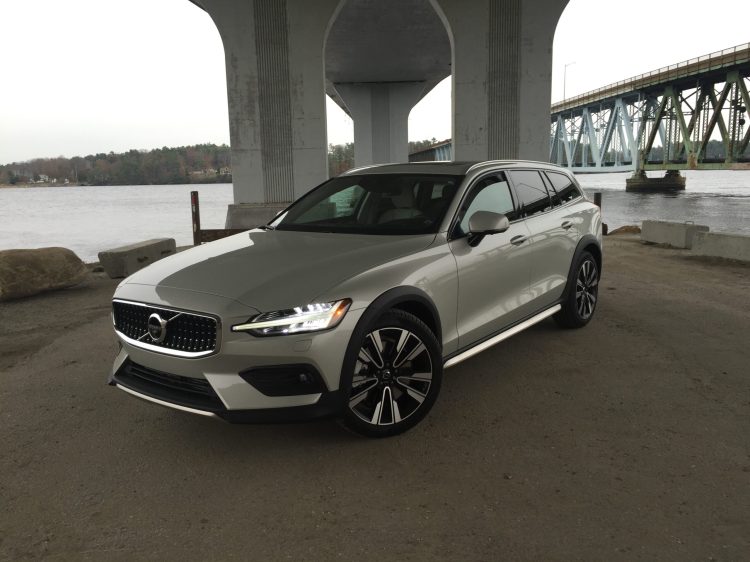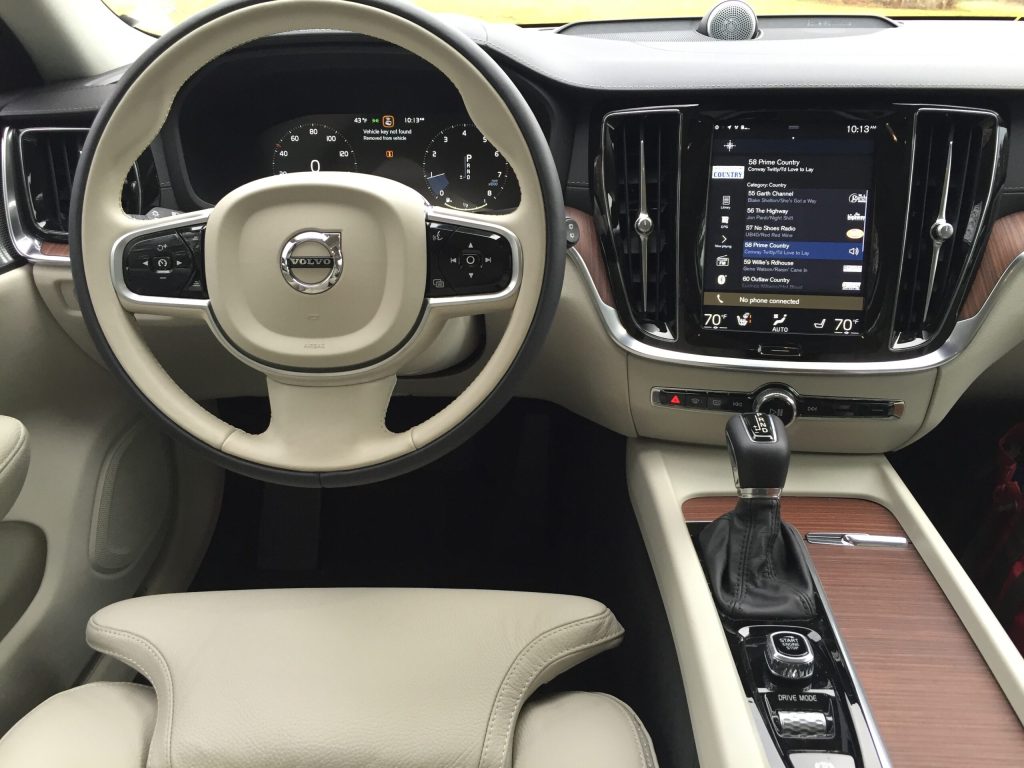Ten years since the divorce from previous owner Ford, Volvo Car is at another crossroad as current owner Gheely Motors of China works to shift this premium lineup to a fully electric vehicle future, making Volvo the first full lineup absent an internal combustion engine.
Long a niche automaker in America, yet slightly more popular in Europe where it has long Swedish roots to share, Volvo claims to have a clear vision for its future. No automaker has yet made, and sold in sustainable quantity, commercially affordable EV’s to replace gasoline and diesel powered vehicles. Volvo aims to be first; their XC40 electric compact crossover, plus some Polestar labeled vehicles, go on sale in 2020.
Currently, Volvo sells four station wagons, three crossovers, and two sedans in the North American market. Committed to the station wagon body-style more than anyone else, the latest V60XC (Cross Country) is an easy off-shoot of the regular V60 wagon, which is an extension of the S60 sedan, which shares its architecture with the XC60 Compact Crossover.
Since 1998, Volvo has been marketing the Cross Country trim here. Black body cladding and wheelwell trim, different wheels, plus a 2-plus inch lift in the chassis for greater foul-weather ground clearance, has been the formula to give buyers a reasonable alternative to heavier, taller crossovers. Buyer demand cements the philosophy; consumers buy V60XC models two-to-one over the regular V60 wagon, even though AWD is optional on the base V60 wagon.
Driving dynamics continue a recent Volvo trend; fluid motions from the supple chassis, predictable responses from the helm, plus added efficiency under the hood. While the V60 gives buyers three engine choices—including a plug-in hybrid option—the V60XC comes in T5 trim only with the base 2.0-liter turbo-four making 250-hp through an 8-speed automatic transmission. EPA projections are 22/31/25-mpg.
Long-term station wagon owners will love the appeal of the V60 and the V60XC as they drive more like a conventional car; low, nimble, and lighter. Sales numbers, and market forces, tell us a different tale as the XC60 Crossover sells much better than the whole S60-sedan and V60-wagon lineup.
While the V60XC and the XC60-crossover share the same overall length and wheelbase, the crossover is a full six-inches wider and nine-inches taller than the wagon, measurements that translate into a much roomier cabin—for both people and parcels. There is no arguing with the fitted-coziness of the V60’s cockpit; it is luxuriously intimate. Yet this is in sharp contrast to the similarly luxurious and roomier cabin in the crossover, which is also easier to enter. The XC60 only weighs 300-pounds more than the wagon, does return two-mph less fuel economy, but it does pass the recycling center mall excursion test with a 32-gallon trash can fitting under the power lift gate—the V60XC’s smaller cargo compartment does not.
Like so many new arrivals, the Volvo is loaded with tech. There is a mobile app with remote start, wi-fi hotspot, smartphone integration, plus apps in the 12.3-inch entertainment screen for Pandora, Spotify, and Tunein. Active safety includes low and high-speed collision mitigation with pedestrian detection, road sign information in the center dash info panel, blind spot system with steering assist, active headlamps, plus auto brake action with cross-traffic alerts.
Base pricing starts at $45,100—about $3,000 more than a V60 AWD wagon or the XC60 crossover. Add the advanced package ($2,500) with LED fog lamps, high-pressure headlamp washers, Adaptive Cruise and Pilot assist, as well as surround-view camera; plus the Cross Country Pro Package ($2,800) with 4-zone climate, power passenger seat, 19-inch wheels, plus front seat extenders with power lumbar; and then heated rear seats and steering wheel ($750), metallic paint ($645), Bowers and Wilkins Audio ($4,000), Park Pilot Assist, ($200) along with destination $995 (how come a car built in Sweden has a lower destination charge than a vehicle built in the USA?) and the V60XC balloons to $56,990.
This reinforces the challenge of selling competitive EV’s (which so far, have been markedly pricier than their gas-powered counterparts) in a market where several mass-market vehicles already offer more content than the Volvo, for far less money. Despite the intent to sell wagons, is this segment large enough to create the capital to pay for the cost of future EV development?
Volvo wagon owners may not even care. From the Thor’s Hammer LED headlamps back to the elongated L-shaped LED taillights, this is a Volvo wagon that maintains several traditions, the least of which is it isn’t something else.
Comments are not available on this story.
Send questions/comments to the editors.




